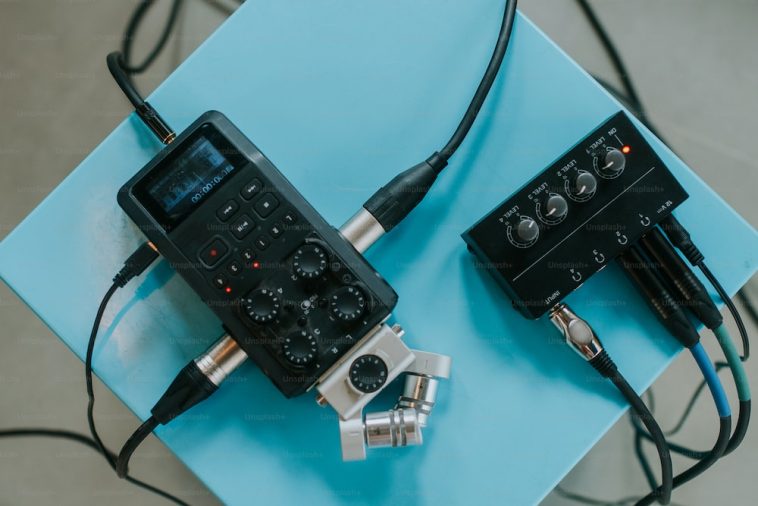Introduction.
Starting a video podcast can feel like a challenge on its own, but doing it remotely? That’s a whole other level.
While video podcasting was once reserved for people who could meet face-to-face in studios, these days, remote podcasting has made it possible for anyone to connect with guests from across the globe.
In this guide, I’ll walk through everything you need to know about video podcasting remotely, from choosing the right software and gear to handling common tech issues that pop up along the way.
Let’s dive in and look at the exact steps, some of the pros and cons, and a few helpful tips to make sure you’re set up for success.
How Do I Video Podcast Remotely?
1. Setting Up the Right Equipment.
While it’s tempting to jump in with whatever gear you have, getting good-quality equipment will make a huge difference. Here’s what you’ll need:
- Computer: A reliable computer with decent processing power. Video files can be large and often require a fair amount of RAM and CPU.
- High-Quality Microphone: Audio clarity is everything in podcasting. A USB microphone like the Blue Yeti or the Audio-Technica ATR2100x-USB works well for both beginners and seasoned podcasters.
- Webcam: For video, a good webcam like the Logitech C920 or a mirrorless camera (if you’re going high-end) can provide excellent quality.
- Headphones: Clear audio feedback helps you avoid background noise and echo. Look for comfortable, closed-back headphones.
2. Choosing Your Recording Software.
Recording software is a critical part of the process, especially when you’re working remotely. Here are a few popular platforms:
- Zoom: Great for beginners and easy to use. While Zoom doesn’t always offer the highest audio and video quality, it’s a solid choice if you’re starting out.
- Riverside.fm: Designed specifically for remote podcasting, Riverside records high-quality audio and video locally on each user’s device, meaning better overall quality, even if there are connectivity issues.
- Zencastr: Known for high-quality audio and video, Zencastr is another good option, though it’s primarily audio-focused.
Each platform has pros and cons, so test them out to see which feels most intuitive.
3. Setting Up for the Best Video Quality.
- Lighting: Natural light works wonders, but if that’s not possible, softbox or ring lights are affordable solutions to ensure a well-lit scene.
- Background: Keep it simple or on-brand. A plain background or a branded banner behind you works well, and it keeps the focus on you and your guest.
- Framing: Keep yourself and your guest framed at eye level and centred. This creates a more engaging, conversational feel for viewers.
Recording and Managing Audio Quality Remotely
Audio issues like echo, background noise, or inconsistent levels can derail a video podcast, so keeping audio quality a priority is key. Some quick tips:
- Echo: Use good-quality headphones and avoid speaker output, which can create an echo.
- Background Noise: Record in a quiet room and consider using noise suppression software or plugins in post-production if necessary.
- Consistent Volume Levels: Use tools like Levelator or Audacity in post-production to smooth out any volume inconsistencies between you and your guest.
Pros and Cons of Remote Video Podcasting
Pros
- Access to a Global Guest Pool: Remote setups allow you to interview guests from anywhere in the world.
- Cost-Effective: You don’t need to rent studio space or invest in high-end equipment to start.
- Flexible Scheduling: Guests can record from wherever they are, making it easier to schedule interviews.
- Safe and Convenient: There’s no travel required, which is especially helpful if guests are in different countries or time zones.
Cons
- Internet Connection Issues: Poor connections can disrupt the quality, causing lag, blurry video, or audio sync issues.
- Audio Quality May Suffer: If your guest doesn’t have quality audio gear, it can affect the overall sound of your podcast.
- Less Control Over Visuals: If guests don’t have good lighting or a suitable background, the final video may not look as polished.
- Technical Glitches: Remote setups can be tricky, and it’s not uncommon for technical issues to arise mid-recording, from connection drops to recording errors.
FAQs about Remote Video Podcasting
Q1: Do I need a professional-grade microphone and camera to start?
Not necessarily. A decent USB microphone and a good webcam are often enough to get started. As your podcast grows, you can consider upgrading to professional-grade equipment.
Q2: How can I ensure a reliable internet connection during recording?
A wired connection (Ethernet) is generally more stable than Wi-Fi. If Wi-Fi is your only option, consider recording at a time when your internet is least congested and disconnect other devices using the network.
Q3: What if my guest doesn’t have the best audio setup?
You can guide them to use headphones and record in a quiet room. Many remote recording platforms have some noise-reduction features, and you can also do some audio editing to improve quality in post-production.
Q4: Which video editing software should I use for post-production?
If you’re just starting, tools like iMovie (for Mac) or DaVinci Resolve (for both Mac and Windows) are free and relatively easy to use. For more advanced editing, Adobe Premiere Pro offers professional-level capabilities.
Q5: What if there’s a technical glitch during the recording?
Some platforms save audio and video locally as a backup. Always check with your recording software to see if this feature is available. Having an extra recording device, like a smartphone or separate audio recorder, can also be a lifesaver.
Wrapping It Up
Video podcasting remotely opens up many new possibilities for podcasters. From connecting with international guests to saving on setup costs, it’s become a popular option for creators worldwide.
Of course, it has its own set of challenges, but with the right equipment, software, and a little patience, it’s completely achievable to create high-quality, engaging video podcasts.
So, are you ready to take your podcast to the next level by going remote? Or, if you’ve already started, what has been your biggest challenge so far?





GIPHY App Key not set. Please check settings